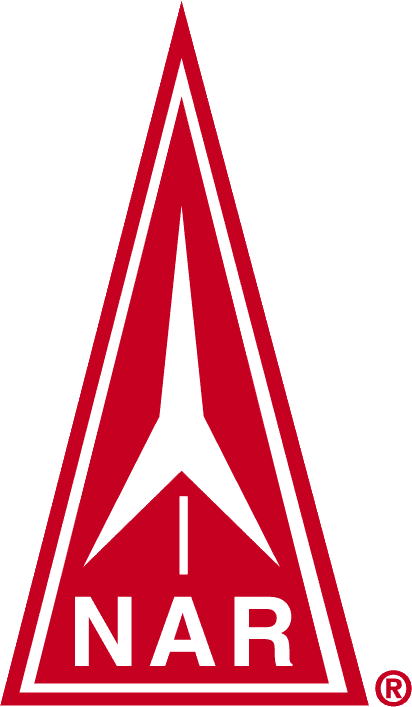Quick Links

High Power Rocketry H motors and higher ( and sometimes G motors)
High Power Rocketry is a different animal from both Low and Mid-Power hobby rockets. Not only do these models tend to be bigger and louder than their smaller cousins, but participating in this type of rocketry requires that you get certified in order to both fly and purchase the motors you’ll need to power these models. HPR opens a whole new world of technical flying and knowledge, both of these aspects are tested to various degrees at certification time.
In order to certify you'll need to join either the NAR or TRA. We also require local Club membership. HPR rockets are regulated by a number of organizations and laws, one of which is that you cannot purchase a HPR Motor without being a member of either national organization. And, since HPR requires a lot of ground support equipment and maintenance, we also require flyers to pay yearly club dues to help defray our costs of providing and maintaining Club equipment.
The Club has an Officer in charge of helping members interested in becoming HPR( High Power Rocketry) certified flyers. There are three levels of certification: Level One ( H-I motors), Level Two ( J-L motors) and Level 3 ( M-O motors). Our club currently offers certification for levels one and two.
In order to certify, you’ll need to check out the requirements on the NAR website and contact our Certification Officer to schedule a time for your certification flight and, if attempting Level 2 , your certification written test. Contact information for our Club Certification Officer and links to NAR Certification Rules and Requirements can be found here. (http://www.psc473.org/certifications.html).
Due to their size and power, most HPR models use both electronics and reloadable motors. There are a number of manufacturers for both and whichever you choose to use is entirely up to you. Feel free to ask our HPR Club Members for advice or help. Things at this level can get both complicated and expensive in a hurry and we’re here to help you avoid mistakes.
The Club has a number of launch pads that can accommodate the various sized HPR models flown at our launches. These pads are all different, so please make sure you take the time to inspect your assigned pad and understand how it works before loading your model.
Power to these pads is supplied through a spider box that is identical to the one used at the Mid-Power pads. However, please make sure to do a continuity check before walking away from the pad area. Since these pads are so far away from the LCO area, you can save some steps by checking before you leave.
To ensure rockets get off the pad and on a good predictable flight path, the Club requires that all HPR Models use rails and are equipped with rail buttons to do so. We have both 1010 and 1515 rails for your use.
There is one other rule the Club has about HPR Flights that is different from the smaller, lighter models flown at our launches. Normally HPR flights are allowed to fly up to 3850’ above ground level (AGL) or, on overcast days, just below the cloud ceiling height, whichever is lower. The exception to this rule is when the wind is coming from the SE. Wind from this direction may cause rockets to drift towards and possibly damage the Land Owner’s buildings ( Barns, outbuildings, and home.) In order to mitigate this possibility, we reduce the maximum flight altitude on days like this to 2000’ AGL. However, weather and wind direction can change rapidly during a launch, so we ask HPR flyers to check the weather before leaving home, and to come prepared in case we decide to use the lower flight limit. Flyers should check-in at the RSO table before prepping for a flight to see if any of these restrictions are in place.
Full Site Links

High-Power Spider Box

High Power Dos and Don’t’s
Do
Check with the RSO prior to launching to see if there are any altitude restrictions due to wind and/or cloud ceiling.
Make sure you are on the correct pad number and are using the correct ignitor leads for your pad.
Make sure you are familiar with how your assigned pad works before putting your model on the pad.
Make sure you launch angle is angled away for spectators and parking area.
Make sure the ignitor clips are not touching each other or the blast deflector plate.
Make sure the ignitor wires can fall away after ignition so they don’t get scorched or ruined.
Do a continuity check at the spider box before walking away from you model.
Make sure everything on the pad is tightened up before walking away from your model.
Inform the LCO if your model has been sitting for more than 30 minutes on the pad and you have active electronics.
Ask for help if you need it or have a question.
Don’t
Pull on the rails or rods to adjust the launch angle without loosening them first
Trap the ignitor wires so they can get damaged from your rocket’s motor’s flame
Pull on the wires leading out of the spider box.
Install ignitors and/or turn on electronics until your rocket is on the pad and in the vertical launch position.

